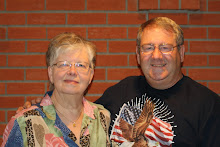A guide picks us up with a bus and we begin driving around the island. He points out the airport which was built in 1998. He tells us this is the Pearl River Delta, where the water is yellow because fresh water meets marine water. Tom whispers that he wonders what comes down from upstream. We stop at a long beach. 90% of the island is hilly. There are few trees on the hillsides and they have lots of landslides.
The guide tells us we could have a cheap stay on the island if we want - at the prison.
The natives are Hahkanese. We drive through a very small town called Tai-o. It has been the home of fishermen for 700 years. We pass a government housing project that is 4 stories high. He says most units are empty because the younger families are moving to Hong Kong because the schools are better and the older fishermen and wives don't want to leave their stilt houses on the water. Someone asks if the structures are cold in the winter and he says it never freezes here and temperatures are pretty mild.
We see several water buffalo along the side of the road and the guide tells us they are "unemployed." Often when someone moves to Hong Kong they let them loose. They think there are close to 2000 on the island. He tells us there are many snakes, but the only poisonous ones are the green tree snakes. There are tiny deer, white or pink dolphins and whales.
This seems a typical Chinese scene.
Walking through the town we stop at a Tao temple, one of the oldest in China. The front step is quite high. They build them that way because people who are entering will dip their heads to see where they are stepping and the dipped head is a sign of respect to the gods. All over China we were told not to step on the wooden or metal clad sill of the steps entering the temples because it is bad luck.
Next we walk through the market. The round things hanging are fish bladders - not for waste, for air. The women use them in soup (we didn't ask if they actually eat them) because they say they contain collagen which is good for the skin.
You don't want to know what some of this stuff is and I can tell you it stinks! It isn't all fish.
Some of the stilt houses. You can see how small they are-look behind the pink and navy tops and see the back wall.
Many people walk the 268 steps up to the Buddha statue. Our bus took us to the backside and our tour group was allowed to walk through his tummy. There are large bells inside, but they don't ring them anymore. He is called a Happy Buddha because he has a big tummy - only the Chinese make their Buddhas like that, not the ones in India. He is 111 feet tall. Since he faces Beijing the locals call him The Political Buddha. He sits on a lotus flower which means purity. There is a symbol on him that some visitors mistake for a swastika. But it is drawn counter-clockwise and is a Chinese lucky charm meaning enlightenment. Our guide tells us most Chinese Buddhas are wooden, painted with gold. Buddhism was brought to China from India 2000 years ago. Other religions are Taoism and Confucism, along with Christianity.
The right hand being raised is a symbol for bravery.

The next pictures all look towards the airport or across to Hong Kong.
Hong Kong airport














No comments:
Post a Comment